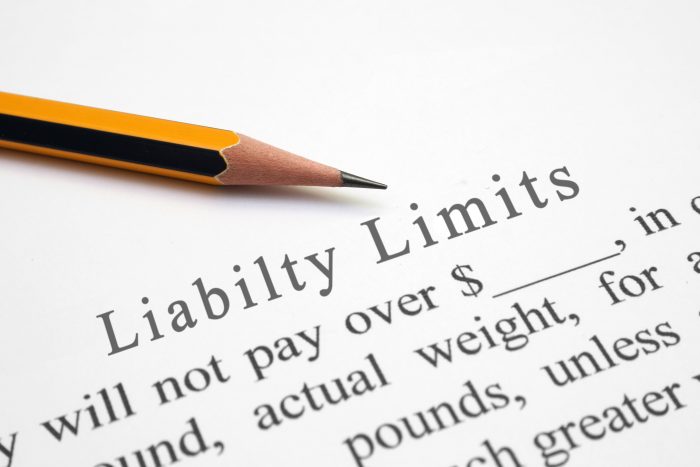Liability Limits

What are your liability limits? Do you know why it’s important to know your limits?
The truth is that most of us probably don’t know. Most people just hear the cheapest price, and they’re sold. But do you take into consideration what exactly you’re paying for?
In most states, liability is a part of insurance that is required by law. It provides coverage when you are legally deemed responsible, or at fault, in an accident. However, liability provides no coverage for your own property in an accident.
There are two components of liability coverage:
Bodily Injury: Bodily injury helps pay for the other driver’s emergency services, medical expenses, and lost income (if any).
Property Damage: Covers the costs of repairs for another person’s property, like their car or home.
You are responsible for choosing your coverage limits when purchasing your policy. Depending on your state, there are specific coverage minimums required by law. For example, Colorado’s limits are 25/50/15.
The three numbers represent coverage limits for different aspects of a claim.
For Colorado, 25 means there is a $25,000 limit for bodily injury, per person. This is the maximum payout for medical expenses, per person.
50 represents $50,000 per accident for bodily injury. Regardless of how many people were injured in the accident, fifty grand will be the maximum payout. If you seriously injure 2+ people, these minimum limits could not be sufficient.
15 represents $15,000 for property damage. The insurer will not pay out any more than the $15,000. This can become a major issue if you total out a $20,000 car.
The main point here is that if you cause an accident that exceeds these limits, the costs become your responsibility. You’d be paying the remainder of the bills yourself. Minimum coverage is not always enough. If you are unaware of your coverage limits, call your insurance agent and see about increasing them for peace of mind in the future.









